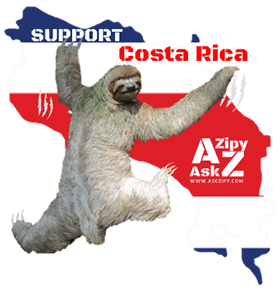Ask Zipy | Frequently Asked Questions | Costa Rica Online Business Directory, Things To Do in Costa Rica
Geography: Costa Rica has a total land mass of 50,660 square kilometers with a total of 639 kilometers of borderline shared by Nicaragua to the north and Panama to its south. Costa Rica has a tropical and subtropical environment with four different types of forests and a proportional large area of coastline for its size with a total of 1290 km. The climate varies greatly depending on location-dry in the northwest, hot and humid on either coastline and cooler in highlands.
The elevation extremes are enormous for such a small country. Central America was created volcanic eruptions which created the bridge between North and South America making it possible for animal migration. Through the last Ice-Age, the largest biodiversity survived in and around Costa Rica. Of this historic volcanic activity, at least sixty volcanoes are found in Costa Rica. The highest mountain peak is Cerro Chirripo with an altitude of 3810 meters (app.11,500ft).
Costa Rica has overall a very stable temperature despite its seasonal changes, with the dry season lasting from December through April and the rainy season from May through November






